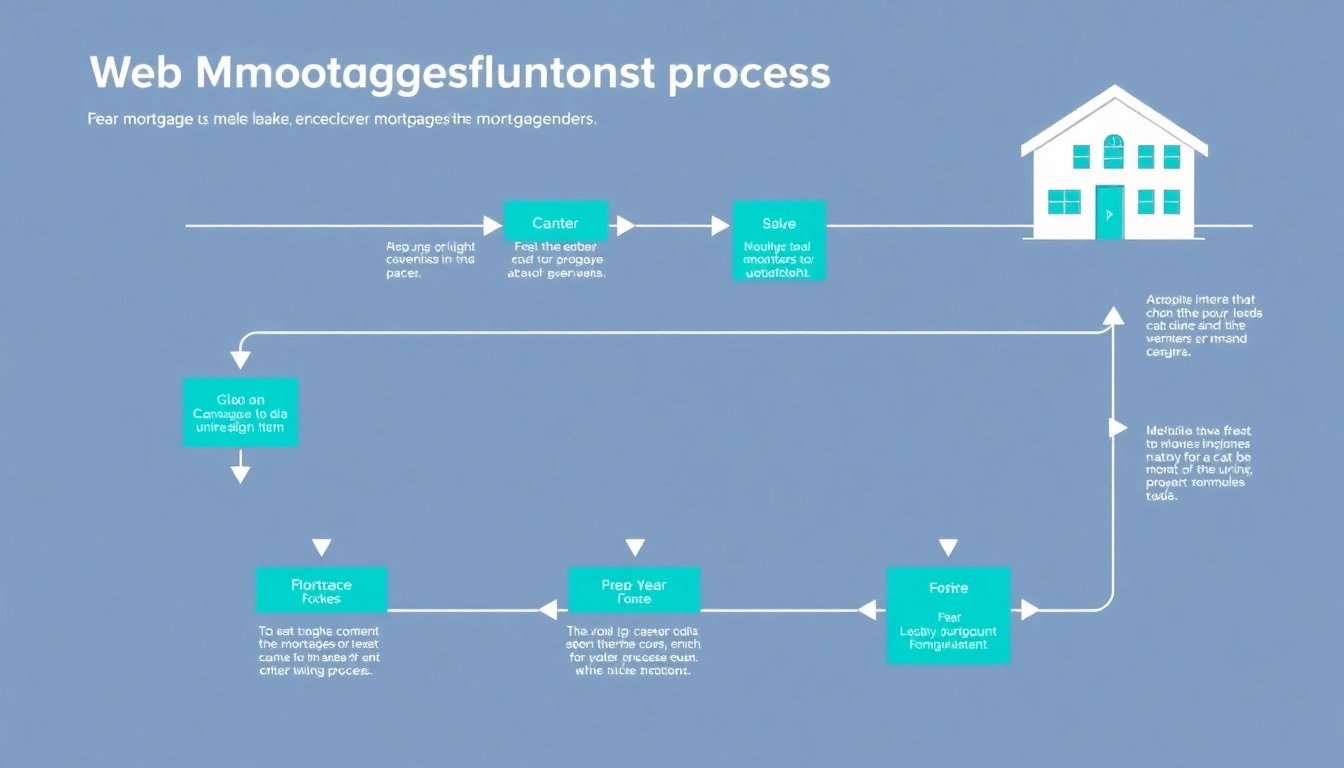Understanding the Mortgage Process for Lenders
The mortgage process is a critical element of the real estate market, playing a crucial role in how lenders operate. Understanding the nuances of the mortgage process for lenders can not only improve efficiency but also enhance the overall experience for potential homeowners. In this article, we will delve deeply into each aspect of the mortgage process, gearing our focus toward lenders. This will cover everything from mortgage pre-approval to post-closing communication with clients.
What is Mortgage Pre-Approval?
The mortgage pre-approval process is the initial step that both lenders and potential homeowners undertake before engaging in house hunting. This entails a thorough assessment by the lender to evaluate the borrower’s creditworthiness and financial history. Lenders provide pre-approval letters, indicating the amount they are willing to lend, which can significantly enhance the buyer’s credibility when making offers on properties.
To obtain pre-approval, borrowers will typically need to provide various types of documentation, including income verification, credit checks, and details about existing debts. This comprehensive examination allows lenders to ascertain how much risk they are assuming and what amounts they can confidently lend.
Common Challenges in Pre-Approval
While pre-approval is a vital part of the mortgage process, it’s not without its challenges. One common issue is the variance in credit scores; often, borrowers are unaware of how their credit score impacts their borrowing capacity. Additionally, documentation discrepancies, such as income inconsistency or missing financial statements, can delay the pre-approval process. Lenders need to communicate effectively with clients to mitigate these potential issues and set clear expectations throughout the process.
Best Practices for Lenders
To navigate the pre-approval phase successfully, lenders should implement best practices such as:
- Clear Communication: Regularly update clients on their loan status and necessary documentation.
- Educational Resources: Provide clients with educational materials that explain the pre-approval process and its significance.
- Technology Integration: Utilize streamlined software that automatically gathers necessary client data, facilitating an efficient pre-approval process.
Steps in the Mortgage Process from Application to Closing
The mortgage process encompasses several stages, each essential for ensuring a successful transaction. Understanding these steps allows lenders to provide better service to their clients and streamlines their operations.
The Application Process Explained
Once pre-approval has been secured, the next step involves the formal mortgage application. During this stage, borrowers must complete an extensive application form, providing detailed information regarding their employment history, income, tax information, and existing debts. Lenders must carefully analyze this application to determine eligibility for the loan.
Key Documents Needed for Submission
Accurate documentation is pivotal in the application process. Essential documents typically include:
- Pay stubs for the last 30 days
- Two years of W-2 forms or tax returns
- Bank statements covering the past two months
- Proof of additional income (bonus or self-employment)
By ensuring that borrowers submit these documents promptly, lenders can minimize delays in processing applications.
Typical Processing Times for Lenders
Processing times can vary depending on numerous factors, including the lender’s internal processes, client documentation quality, and the type of loan. However, on average, it takes about 30 to 45 days from application to closing. Lenders are encouraged to set realistic timelines with clients, also taking into account potential processing delays that might arise.
Loan Underwriting: What Lenders Should Know
After a complete application is received, it moves to the underwriting phase. This step is where the lender critically assesses the risk associated with lending to the borrower.
Factors Affecting Underwriting Decisions
Underwriters consider various factors, including the borrower’s credit score, debt-to-income ratio, employment stability, and property appraisal value. Each of these elements contributes to a comprehensive risk assessment, guiding the final lending decision.
How to Streamline the Underwriting Process
To ensure the underwriting process runs smoothly, lenders can take the following steps:
- Utilize underwriting software that integrates directly with credit reporting agencies for real-time data access.
- Train underwriters to identify red flags quickly, ensuring faster resolutions to potential problems.
- Maintain open lines of communication with clients during this stage to address any concerns they may have.
Common Underwriting Mistakes
Errors in underwriting can lead to loan denials or delays. Common mistakes include incorrect data entry, failure to check all borrower credit histories, and overlooking critical factors affecting the borrower’s eligibility. A thorough review process should be implemented to catch and rectify these errors before finalizing decisions.
The Role of Communication in the Mortgage Process
Effective communication is the backbone of a successful mortgage process. It not only enhances client satisfaction but also significantly contributes to the efficiency of the lenders’ operations.
Importance of Customer Interaction
Frequent interactions with clients can demystify the mortgage process, helping them understand each phase and what is required of them. Good customer service goes beyond just answering questions; it involves actively listening to clients’ needs and providing tailored guidance.
Tools for Effective Communication
Utilizing modern communication tools such as customer relationship management (CRM) software can significantly enhance the lender’s ability to keep in contact with clients. These tools can automate updates on the client’s loan status, document requests, or milestone achievements throughout the process.
Monitoring Client Expectations
Clients often have varying expectations regarding how quickly the mortgage process will unfold. Lenders should manage these expectations by providing regular updates, timelines, and transparent communication about any potential delays or issues.
Post-Closing: Keeping Clients Engaged
The interaction between lenders and clients does not stop upon closing. It is crucial for lenders to maintain engagement with clients even after the process is finalized. This can foster long-term relationships and encourage referrals in the future.
Educating Clients on Their Mortgage
Once clients have closed on their mortgage, they should receive educational materials outlining their next steps. This may include information about making payments, understanding interest rates, and managing escrow accounts. An informed client is more likely to remain a satisfied client.
Best Practices for Client Follow-Up
Regular follow-ups can help reinforce the relationship with clients. Strategies might include:
- Sending emails or newsletters with updates on interest rates or refinancing options.
- Conducting annual reviews to discuss changing financial circumstances and future mortgage needs.
- Encouraging clients to refer friends and family, possibly offering incentives for successful referrals.
Getting Client Feedback for Improvement
Client feedback is invaluable for process improvement. Lenders should implement post-closing surveys or reach out directly to gather insights about clients’ experiences. Understanding clients’ perspectives will help refine the mortgage process and enhance service delivery for future clients.



